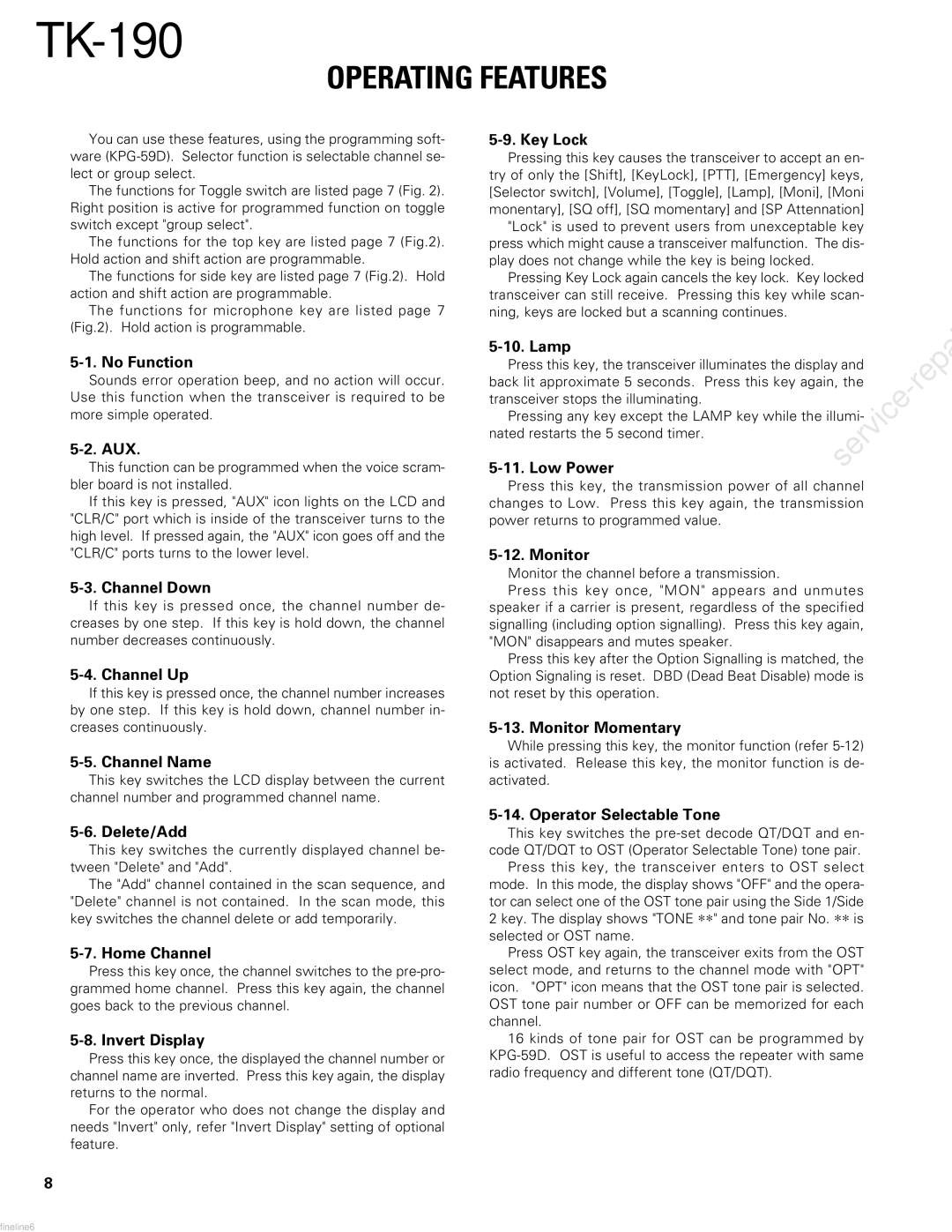TK-190 specifications
The Kenwood TK-190 is a robust and versatile portable two-way radio designed to meet the communication needs of various industries, including construction, hospitality, security, and event management. This model stands out for its blend of reliability, user-friendly features, and advanced technologies, making it an ideal tool for professionals who require seamless communication in demanding environments.One of the standout features of the TK-190 is its compact and lightweight design. Weighing in at just over 10 ounces, this radio is easy to carry, ensuring it won't become a burden during long shifts. Despite its small size, the TK-190 is built for durability, complying with the MIL-STD-810 specifications for military standards. This ensures it can withstand harsh conditions, including extreme temperatures, humidity, and dust.
The TK-190 operates on VHF frequencies with a range of up to 5 watts, making it suitable for both short-range and long-range communication. This capability allows users to maintain clear communication over substantial distances, which is particularly beneficial for larger sites or events. The radio offers 99 programmable channels, providing flexibility to configure communication for various teams or departments.
Another significant advantage of the TK-190 is its impressive audio quality. The radio features a high-performance speaker and advanced audio processing, which enhances clarity and reduces background noise. This is crucial in noisy environments where clear communication is essential for operational efficiency.
The TK-190 also supports CTCSS and DCS signaling, allowing users to avoid interference from other communication sources. This selective calling feature ensures that only designated users receive certain transmissions, enhancing both security and privacy.
In terms of battery life, the Kenwood TK-190 is equipped with a high-capacity lithium-ion battery that provides extended operation on a single charge. This is particularly advantageous for users who require reliable performance throughout long working hours.
Finally, the TK-190 is designed for ease of use, featuring a simple interface with large, tactile buttons. This allows users to quickly access functions, even while wearing gloves. The radio also includes a built-in LED indicator for battery status and channel selection, making it intuitive to use in various conditions.
In summary, the Kenwood TK-190 is a reliable, feature-rich portable two-way radio, offering exceptional audio quality, versatile communication options, and robust durability, making it an indispensable tool for professionals across various fields.
